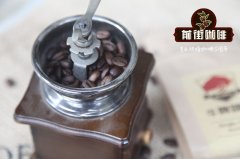Guatemala Graft Estate Finca El Injerto Introduction How to Drink Guatemala Coffee

Professional coffee knowledge exchange more coffee bean information please follow the coffee workshop (Wechat official account cafe_style)
Guatemala has been growing coffee since around 1850. Before World War I, the Germans controlled as much as 80% of the country's production, most of which was exported to Germany. ANACAFE, the official coffee farmers' association, divided the country into eight regions according to region and flavor in the 1990s, and registered trademarks to promote the origin. These include Antigua, Acatenango, Huehuetenango and Atitl á n, where many award-winning farms are located. Common beans in Guatemala today include Typica, Bourbon, Caturra, Catua í, Pacas, Maragogype, Pacamara (a hybrid of the first two), Pache Comum (a local variety of Typica), and Gesha.
One from Guatemala, from the Acatenango district. Because the taste is too unique, the characteristics of the origin are completely overshadowed. If the performance of a geisha in Panama is an one-man show, Guatemala, which has an ever-changing planting environment, is a big stage for different varieties to blossom; the Emerald Manor won the championship with a geisha, and for a moment there is Finca El Injerto (Graft Manor) in Huehuetenango, Guatemala.
Grafted manor won many honors
The coffee that grafted the manor has won the prize in the COE contest every year since 2004 and won the presidential grade in 06, 08, 09 and 10 (i.e. a total score of more than 90 points). But unlike the Jade Manor, which competes with geisha, it competes with different kinds of beans every year. I still remember that in 2010, it won the title of 93.14 points for the Pacamara species, which was rated as "low acid and light taste" at that time, and brought up the planting fever throughout Central America! It can be seen that soil, climate and treatment are as important as bean genes. Since 2011, Graft, like the Emerald Manor, has held its own auction, in which a rare ancient species, Mocha, was sold in 2012 for a record price of US $550 (about HK $4290) per pound, making headlines in the New York Times.
The Graft Manor, located on the Vivette Nango Plateau in Guatemala, is a farm with a long history, covering an area of 720 hectares and an elevation of about 1500 Murray 2000 meters above sea level. among them, 470 hectares of natural ecological rainforest is preserved around the coffee growing area. It has been operated by the Aguirre family, which has emigrated here since 1874, and began to grow coffee in 1900. The name of the estate "Injerto" is named after a fruit of local origin.
The Graft Manor is unique and outstanding because it has repeatedly won the recognition of COE competitions in Guatemala! For example, he won the 11th in 2002, the champion in 2006, the sixth in 2007, and won the championship again with a new variety Pacamara in 2008, and set a staggering high price of US $80 per pound of raw beans in the international coffee bidding market.
Qianjie coffee is recommended to be brewed with 90-92 degree water with ripe fruit aroma, soft acidity and fine texture, caramel sweetness and tea feeling.
Coffee producing area: Guatemala / Huehuetenango/Injerto Manor
Planting altitude: 1500Murray 2000m
Raw bean variety: Catuai+Bourbon
Raw bean treatment: washing method
Quality rating: SHB/ Rainforest Alliance Certification (Rainforest Alliance)
Harvest year: 2008
Qianjie coffee: Guangzhou bakery, the store is small but a variety of beans, you can find a variety of unknown beans, but also provide online store services. Https://shop104210103.taobao.com
Important Notice :
前街咖啡 FrontStreet Coffee has moved to new addredd:
FrontStreet Coffee Address: 315,Donghua East Road,GuangZhou
Tel:020 38364473
- Prev

Baja in Tara Pearl region of Costa Rica | processing process and flavor of wine-scented strawberry flavor raisin honey
Professional coffee knowledge exchange more coffee bean information please follow the coffee workshop (Wechat official account cafe_style) Costa Rica Tara bead production area Bach | Wine strawberry flavor raisin honey processing and flavor? Yellow Catuai; Catuai Amarillo, from the New World (Mundo Novo), is a hybrid with Kaddura (Caturra), which was first developed by Yuba.
- Next

The Central Mountains of Madagascar | the flavor of washed Arabica and Robusta coffee beans?
Professional coffee knowledge exchange more coffee bean information please follow the coffee workshop (Wechat official account cafe_style) Madagascar's Central Mountains | what is the flavor of washed Arabica and Robusta coffee beans? Producing area: the central mountain range of Madagascar. Altitude: 3600-4900 feet, natural organic pollution-free, fertile volcanic soil type. Environment: annual average temperature 24 ℃
Related
- Detailed explanation of Jadeite planting Land in Panamanian Jadeite Manor introduction to the grading system of Jadeite competitive bidding, Red bid, Green bid and Rose Summer
- Story of Coffee planting in Brenka region of Costa Rica Stonehenge Manor anaerobic heavy honey treatment of flavor mouth
- What's on the barrel of Blue Mountain Coffee beans?
- Can American coffee also pull flowers? How to use hot American style to pull out a good-looking pattern?
- Can you make a cold extract with coffee beans? What is the right proportion for cold-extracted coffee formula?
- Indonesian PWN Gold Mandrine Coffee Origin Features Flavor How to Chong? Mandolin coffee is American.
- A brief introduction to the flavor characteristics of Brazilian yellow bourbon coffee beans
- What is the effect of different water quality on the flavor of cold-extracted coffee? What kind of water is best for brewing coffee?
- Why do you think of Rose Summer whenever you mention Panamanian coffee?
- Introduction to the characteristics of authentic blue mountain coffee bean producing areas? What is the CIB Coffee Authority in Jamaica?

